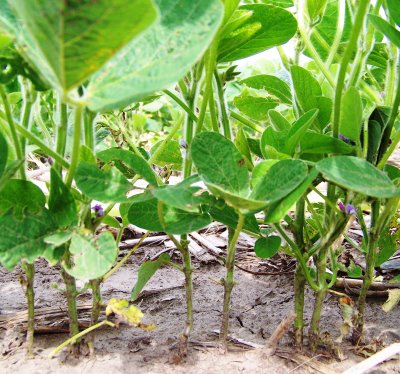Soybean Fertility
06 May 2015, Posted by in Archived
There is a theory out there that you don’t have to fertilize soybeans. This is somewhat true as you can put the seed in the ground with some inoculant (liquid, granular, double; that is another blog for another time) and come away with decent yields. Soybeans have a taproot that will extend downward into the soil profile as well as many lateral roots that accumulate in the upper soil profile. As the growing season goes on, soybeans create many secondary roots and branch out searching for nutrients and/or moisture. The soybean root structure is a very good scavenger and will go find what it needs.
Why do I need to fertilize soybeans?
Uptake: 1 lb P/bushel 3.5 lbs K/bushel
Removal: 0.86 lbs P/bushel 1.43lbs K/bushel
A 40 bu/ac soybean crop will remove 34.4 lbs/ac of phosphorus and 57.2 lbs/ac of potassium. That is a lot of nutrients being removed with the seed. We all know how hard and expensive it is to build soil phosphorus and soil potassium levels. On average, our soil phosphorus levels are slowly being depleted with big canola and wheat crops. With soybeans becoming an important part of our cropping rotation, it is important to try and maintain nutrient levels in the soil.
How do I Apply P and K?
There are still a lot of questions to be answered about where to put the fertilizer with soybeans as it is a relatively new crop to our area. The Manitoba Soil Fertility Guide only allows a maximum of 20 lbs/ac P seed placed depending on your row spacing. There has been a lot of research in the past couple years that suggests we could slightly bump up seed placed phosphorus in soybeans as it does not hurt plant stands or yields. However, research also shows that there was little to no yield change from band to broadcast phosphorus. The best advice is to do what is convenient on your farm. If you feel the need to have some seed placed phosphorus, don’t go any higher than 20 lbs/ac P with the seed (remember it depends on your row spacing). Banding in fertilizer is still the best practice but if broadcasting works for you then do it. Like I said before, soybeans are good scavengers and will go and find what they need. The main thing to remember is to replace what is lost and maintain the nutrients in the soil. Soybeans take away a lot from the soil which can become a problem for fertility in the future.

